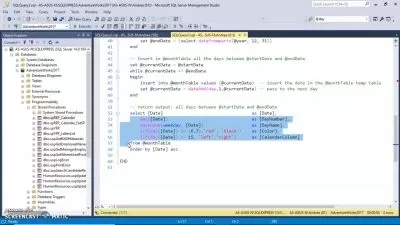Managing SQL Server Database Performance
Viktor Suha
2:50:12
Description
SQL Server performance problems are real and troubleshooting can be a challenge. This course will cover what factors affect performance and how to troubleshoot and optimize performance both on-premise and with Azure SQL Database.
What You'll Learn?
SQL Server performance troubleshooting and optimization are often overwhelming, complex, and take a very long time in production environments. However, this should not be the case. By understanding the exact problem with proper communication and having the best methods and tools to address the problems, the efforts and resources invested into the entire process could be cut significantly or could even be fully prevented. In this course, Managing SQL Server Database Performance, you’ll gain a better understanding and address some of the key factors that can contribute to or impact database performance adversely, beyond the workload you run. First, you’ll explore how to approach performance and scalability issues in general and what methods are preferred for efficiency. Next, you’ll discover a few important SQL Server concepts to help you understand how things work under the hood, along with optimization techniques for server memory and tempdb configuration. Finally, you’ll learn what factors like sizing and choosing the proper service tier, you need to watch out for in Microsoft Azure. When you’re finished with this course, you’ll have the skills and knowledge to prevent major problems, troubleshoot, and optimize your SQL Server environment more efficiently to better manage your SQL Server database workloads.
More details
User Reviews
Rating
Viktor Suha
Instructor's Courses
Pluralsight
View courses Pluralsight- language english
- Training sessions 49
- duration 2:50:12
- level average
- Release Date 2023/10/11















